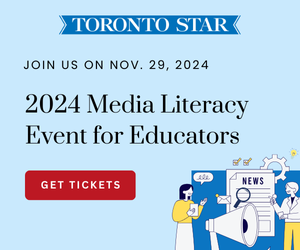 Playgrounds in Toronto are changing. Old, boring playgrounds made of wood are on the way out and new, more creative playgrounds are taking their place.
Playgrounds in Toronto are changing. Old, boring playgrounds made of wood are on the way out and new, more creative playgrounds are taking their place.
To build a new playground, many safety rules have to be followed. Sometimes, these rules can make the equipment boring and too simple.
Most old playgrounds have a slide, monkey bars and a climber. They are good for exercising the body but they don’t challenge the brain, so kids get bored and stop using them. If kids stop using them, they stop exercising their bodies and then they aren’t as healthy.
New types of playgrounds are good for the body and the brain. These playgrounds encourage kids to use their brains and be creative while playing.
“Loose-object” playgrounds have things like wood, blocks, bins, ramps, and bricks just lying around. Kids can use the objects to build whatever they want. They can build things like forts, or set up boards to walk along or jump over.
“Natural playgrounds” are another popular new idea. They have popped up across Toronto and in many other cities. They are play spaces with rolling hills, grass, rocks, trees, and logs. They are places where kids can be creative and connect with nature.
CURRICULUM CONNECTIONS
Writing/Discussion Prompt
Pretend you are an architect and you are designing a new playground. Create and sketch a “loose-object” playground, a “natural” playground or invent your own type of playground. Label your sketch and explain how each part of your playground can be used by children.
Reading Prompt
How do the new playgrounds described in the article compare to the playgrounds at your school or local park? How are they similar? How are they different?
Primary
Extend understanding of texts by connecting the ideas in them to their own knowledge and experience, to other familiar texts, and to the world around them (OME, Reading: 1.6)
Junior
|Extend understanding of texts by connecting the ideas in them to their own knowledge, experience, and insights, to other familiar texts, and to the world around them (OME, Reading: 1.6)
Grammar Feature: Quotation Marks
Quotation marks are often used to show when people are speaking. They are also used when specific titles or names are written. For example, the journalist of this article added quotation marks around “loose-object” playground and “natural” playground to show the reader that these are the names of the playgrounds.
When we write we also need to add quotation marks around movies, songs and book titles. Add quotation marks in the following sentences:
1. Harry Potter is a book that is loved by many children.
2. I hope that I can see Despicable Me this weekend at the movie theatre.
3. Twinkle, Twinkle Little Star is a song that many young children know.







